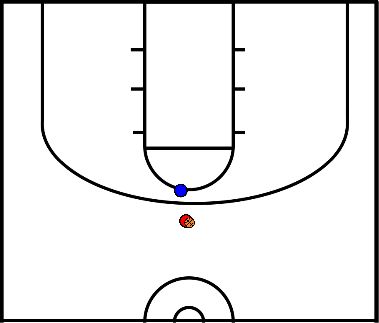Basketball drills for technique defense
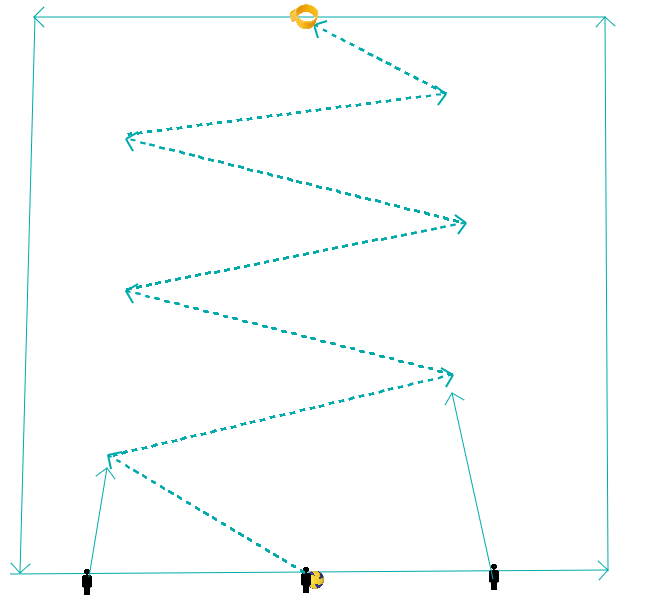
With 3 men on the back line and the middle one has the ball- The middle passes to a man and runs after the ball
- The man in the middle passes to the man on the other side, who also runs after the ball.
- They do this while running to the basket on the other side.
- When someone is close enough to the basket, the man runs a lay-up.
- He becomes the defender and the other two attackers must try to reach each other with a long ball.
- The goal of the defender is to prevent the attackers from scoring.
- If the attackers do not manage to score, they must do 5 push-ups.
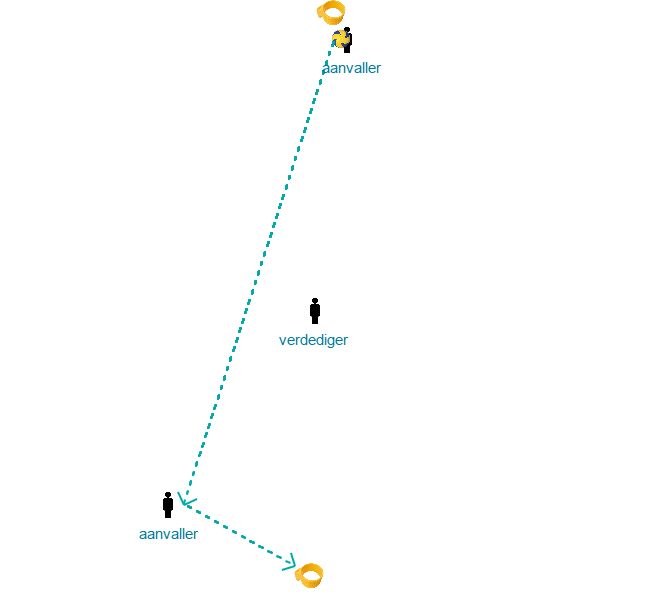
- 4 pawns with ribbons (positioned low to the ground)
- 1 basketball per person
1. The player jumps over the ribbon with 2 feet at the same time, while holding the basketball in front of him at chest height.
2. The player jumps backwards back to the middle.
3. In the middle, the player makes a jump bringing the basketball up (arms extended) and the player makes a 180 C turn.
4. The exercise repeats facing the other side.
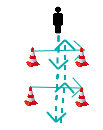

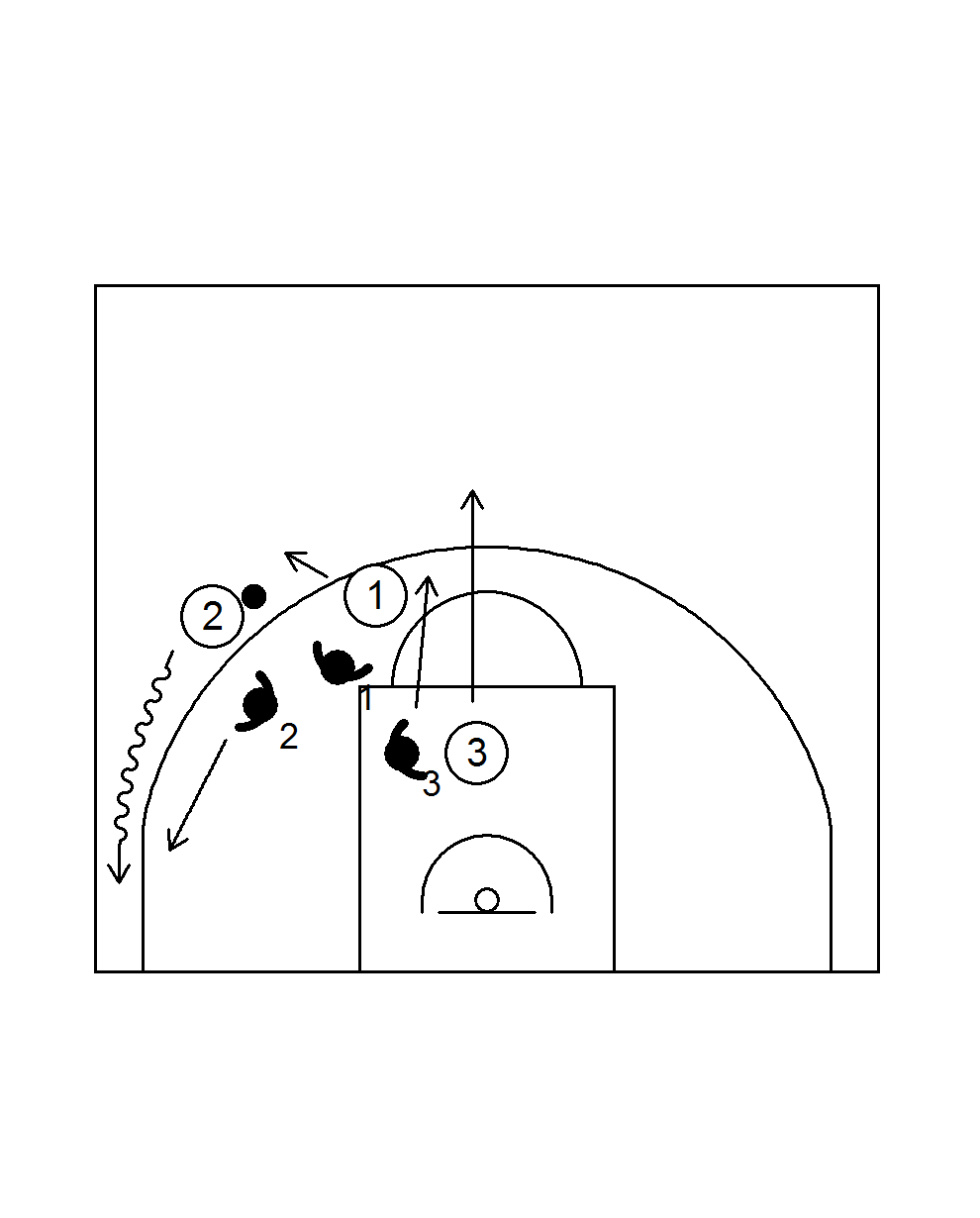
Goal: to defend one pass away
Organization:
- attackers use quarter of the field
- try to get free with in-out or cut
- first restore balance by occupying the 3 positions before cutting again
- defender overplays when his man is playable with one pass
- attacker can dribble
- a waiting player counts down 20 seconds
Teaching Points:
- hand in the passing line
- front foot in the passing line
- catch your man with your forearm
- 3/4 of your attention on the man, 1/4 on the ball
- NO help
- change after x stops
Form of play:
- each team gets 5x ball possession
- who makes the most stops
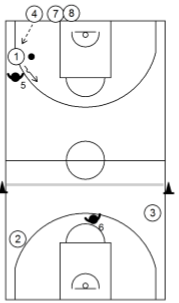
Prerequisites:
players on the dribble can defend Â- and can make a pass the length of the field
Objective:
to practice defending the backfield in the arrowpress Â- to anticipate the pass and always make sure you are in a position to intercept it
Organisation:
- 4 takes the ball and then does not take part in the game anymore, but counts down the seconds
- defender 5 applies maximum pressure on the dribbler
- the defenders can defend all over the field
- attacker 1 may only act on the defensive half Â- attackers 2 and 3 only on the offensive half
- after a stop or score, defender 5 takes the ball back for the next round
- if the attackers score within 10 seconds they have a point Â- if not, it is a point for the defenders Â- the attacker calls if there is a foul on him. Point for the attack.
- play 5 times in a row with the same defenders
- 3 new attackers each time.
- If the defenders make less than 2 stops, they must run.
- when there are 2 or more stops, all attackers must run.
Teaching points:
defend the dribbler on your feet - he may not pass you under any circumstances Â- arms wide to make a pass difficult Â- defender 6 must anticipate the long pass to intercept it Â- must position himself so that he can see the ball AND both other attackers as much as possible (split vision) Â- always adjust his position on the field to intercept the most likely pass Â- if he has not been able to intercept the long pass, Â- He must NOT allow a lay up Â- Defender 5 must then sprint full speed towards the free attacker on the weak side.
Variations:
In the beginning, you may have to limit the space for attackers 2 and 3. Use existing lines on the floor, or place pawns on the sidelines on the attacking half.
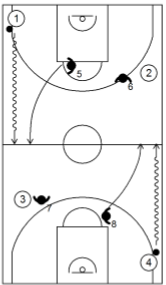
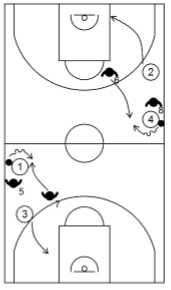
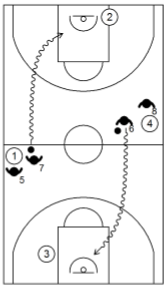
Requirements:
players must be able to individually defend the man with the ball Â- players must be able to dribble
Objective:
Force the dribbler to make a reverse dribble at the sideline and second defender goes for the steal.
Organization:
- 2 against 2 across the length
- losers must defend in the next round
- the trapper anticipates the reverse of the dribbler and taps the ball away as soon as the dribbler has turned 180 degrees Â- completes the lay up on the other basket
- a steal is 3 points Â- a 'normal score' by the attackers is 1 Â- the pair that has 12 points first wins Â- losers walk suicide
Teaching Points:
defender forces dribbler to the side, but must keep an appropriate distance, taking into account the dexterity and speed of the dribbler Â- defender must force the dribbler to the side so that he will make a reverse dribble
Variations:
- left and right
- with triplets half court; third defender must release his own man as soon as the attempted steal begins and cut off passing lines
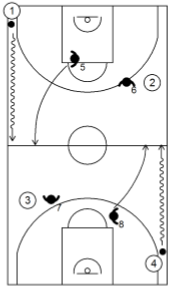
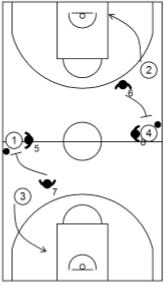
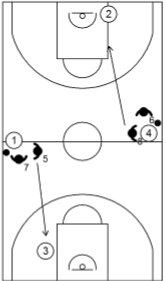
Requirements:
players must be able to individually defend the man with the ball Â- players must be able to dribble
Objective:
Set up kick directly over the center line.
Organization:
2 against 2 across the longitudinal half Â- losers must defend in the next round Â- the dribbler must be over the centre line within 4 seconds (the trapper counts down)
the trapper moves aggressively towards the half way line just before the dribbler crosses it (but due to his speed and the position of his defender is not able to change direction) Â- the trapper widens himself, but moves the foot closest to the touchline backwards slightly, so that he can close the touchline with 1 or 2 slides Â- the dribbler must never pass between the two defenders
As soon as the dribbler grabs the ball, the trapper stays with it Â- the other defender sprints towards the free attacker
Teaching Points:
defender forces the dribbler to the side, but must keep an appropriate distance, taking into account the dexterity and speed of the dribbler Â- defender must force the dribbler to move at high speed along the touchline to the attacking half
Variations:
left and right
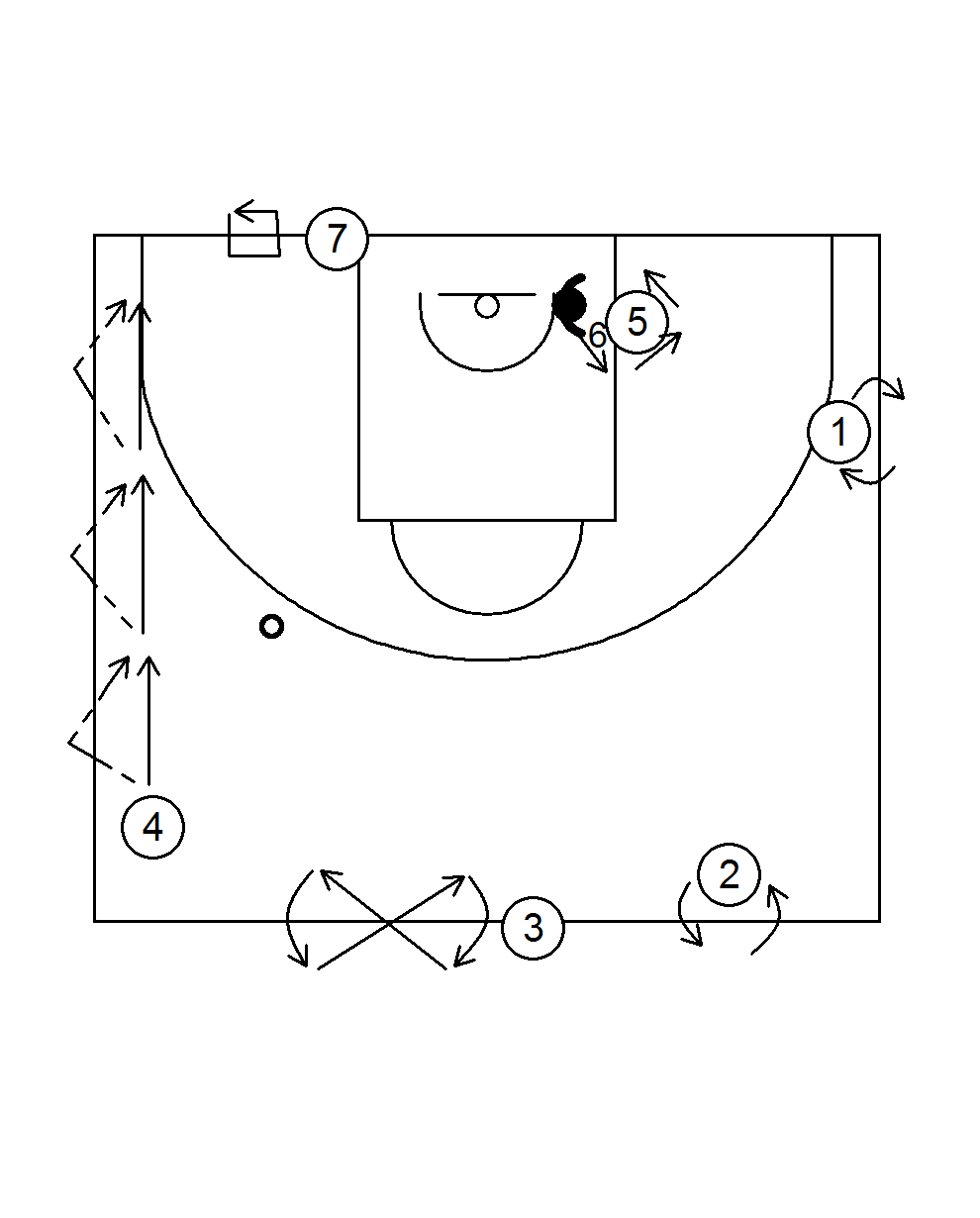
Requirements:
players must know what the correct defensive posture is have
Goal:
- reinforce good habits regarding defensive position
- To increase speed and flexibility of footwork
Organisation:
- do as circuit, 1 minute each time
- player 1 jumps sideways with 2 feet left and right of the line
- player 2 does that forwards and backwards.
- players jump with 2 feet forward wide - narrow - wide. With a jump in the air they do a 180 degree jump and start over again.
- player 4 passes the ball through the wall to himself and goes with slides to the position where he catches it again. Makes it more and more difficult for himself by increasing the distance.
- player 5 defends the mid post and chooses every time another position (behind, swim over - full front - swim over low and back again)
- player 7 makes a square with jumps on 1 foot (feather by landing) always 2x with right, then 2x with left. First left, then right etc.
Teaching points:
- knees bent
- head above the
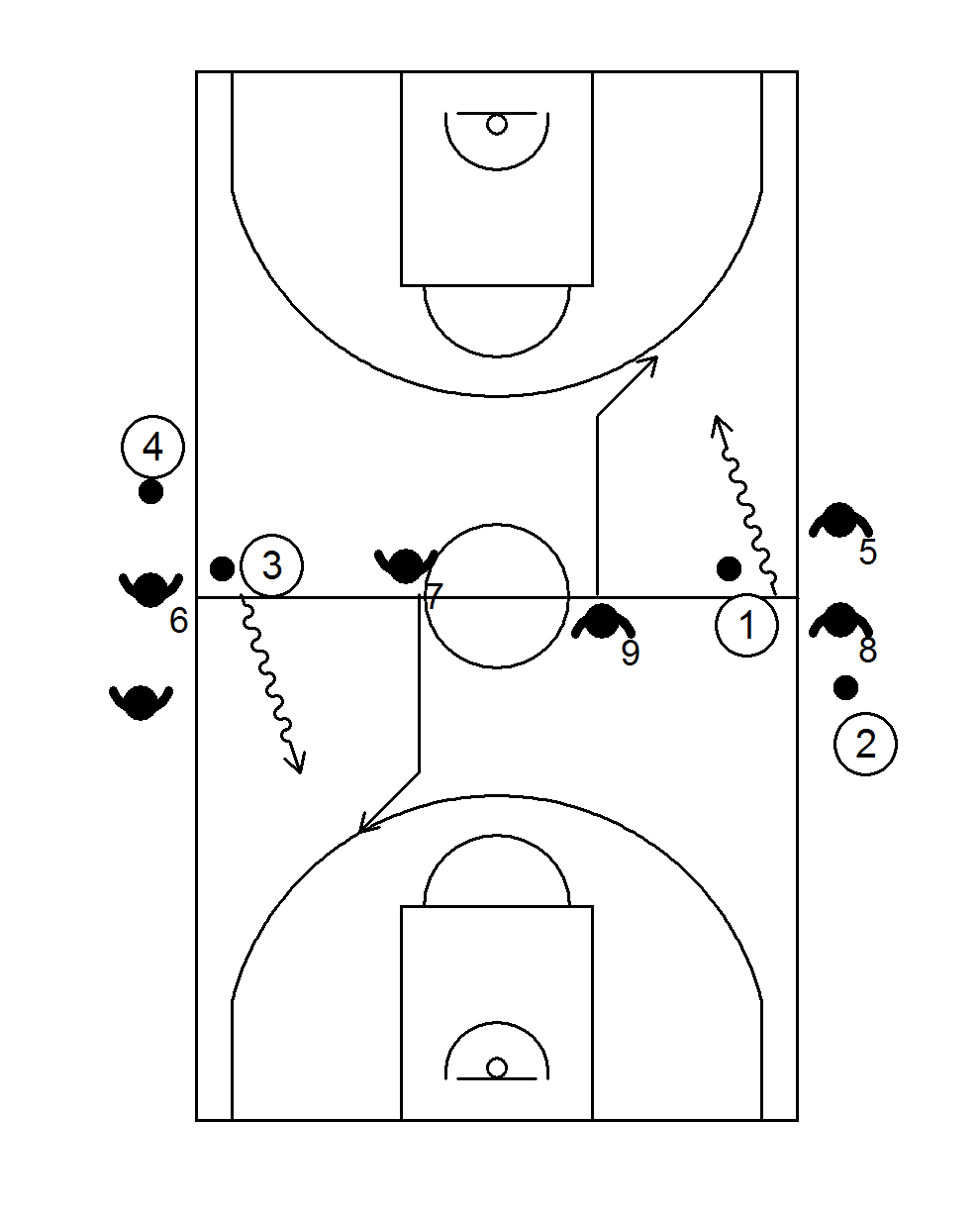
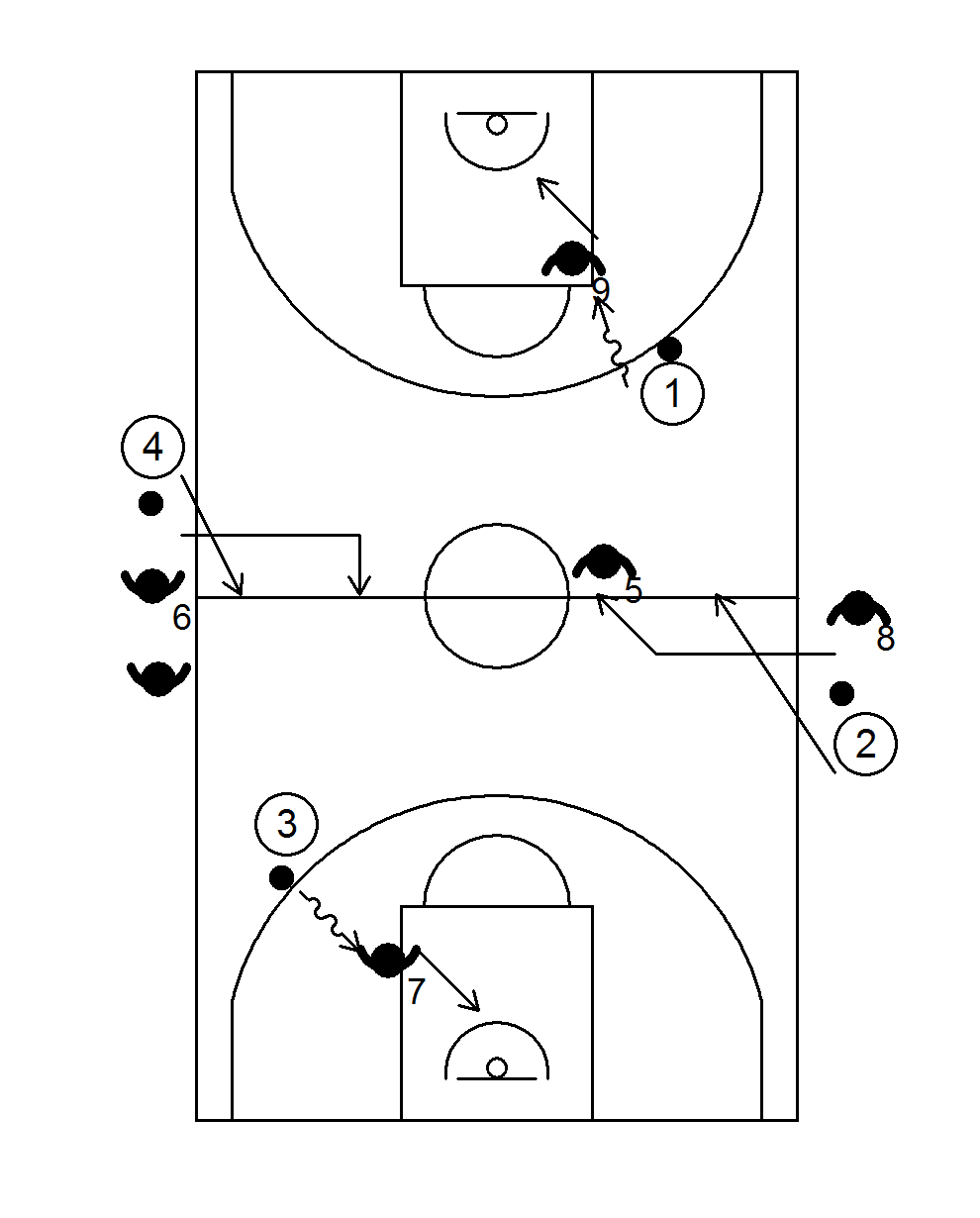
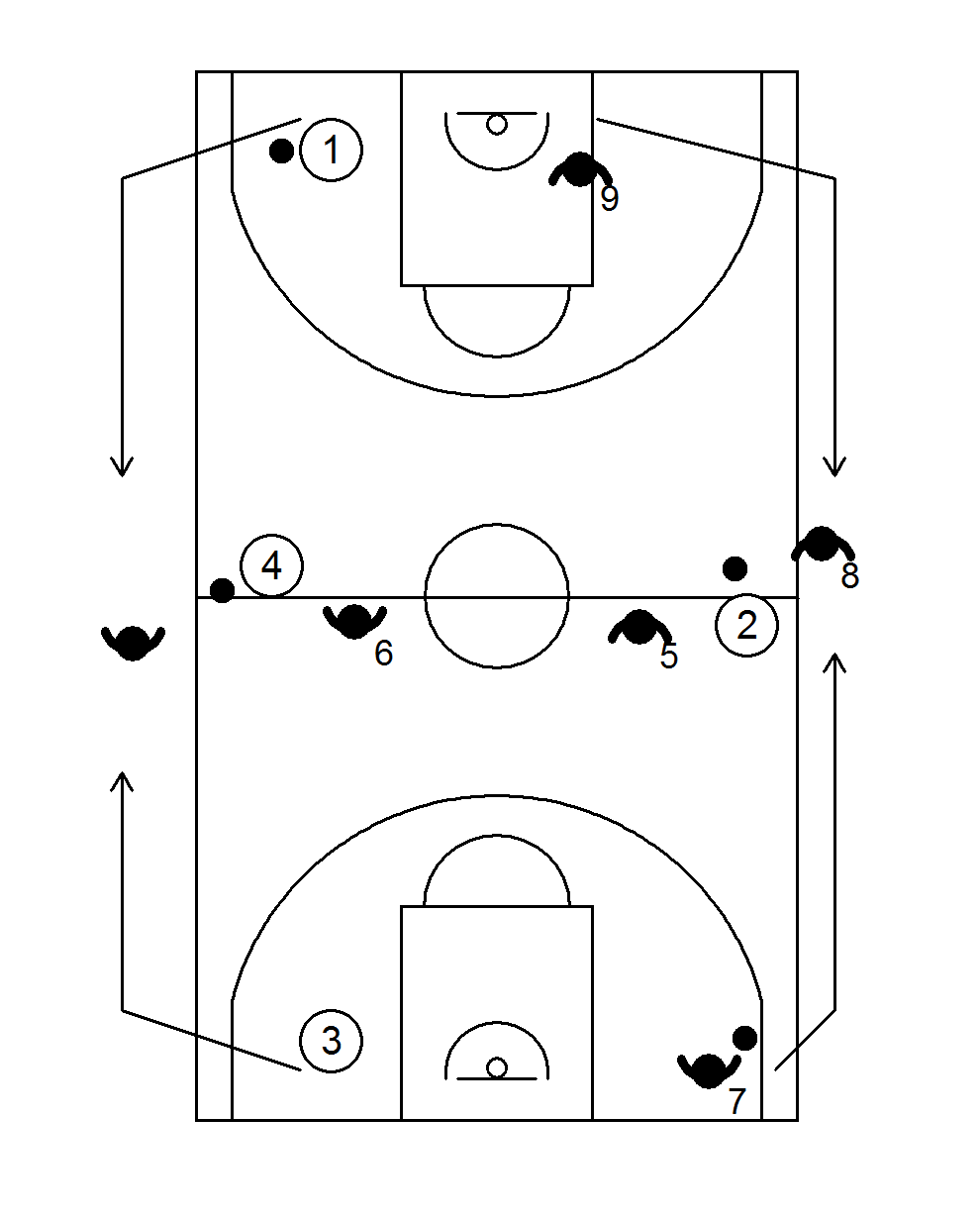
Requirements:
players must be able to defend the man with the ball individually (slides)
Goal: apply individual defensive technique in a simplified game situation
Organisation:
- attackers use one quarter of the playing field
- is not allowed to cross the baseline
- plays 1 against 1
- the defender may only step over the half-way line once the attacker has put one foot over the half-way line (the attacker may make feints, if the defender steps too early he must first put both his legs back behind the line)
- the defender first has to sprint to get his position between man and basket, then stay with slides between man and basket
- winner will attack on the other half of the court
- Loser keeps on defending in this quarter (turning in at the halfway line).
- the next pair starts when the predecessor takes the rebound.
Teaching Points:
- make sure you overtake the attacker by a large margin and only then take the defensive position.
- then immediately move backwards with slides
- In case of a defensive fault, the attacker is the winner.
Variations:
- let the defender keep his hands behind his back if you want to accentuate his footwork
- You can give good defenders a handicap by having them start 1 or 2 steps behind the attacker
- attackers can be slowed down by having them dribble behind their back in front of the 3-point line, etc.
- 4 players on the baseline
- 4 players at the free throw line
- Coach passes to 1 of the players
- Player, opposite the one receiving the pass, runs to the baseline to join the defense
- Other players immediately go on offense and defense
- Important to stop the dribble
- Important to defend the basket
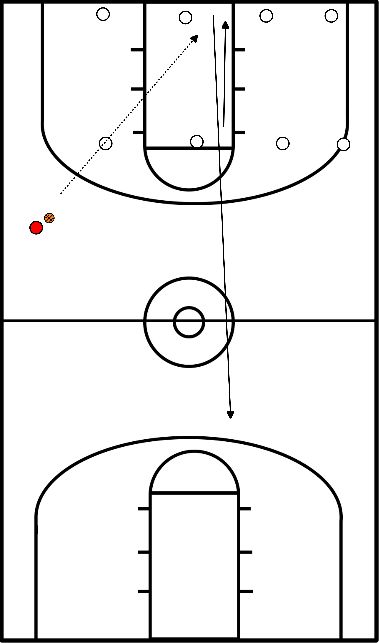
- 3 teams of 3 players
- 3 players in the middle
- Attacking
- Defense up to the center line, even after ball loss
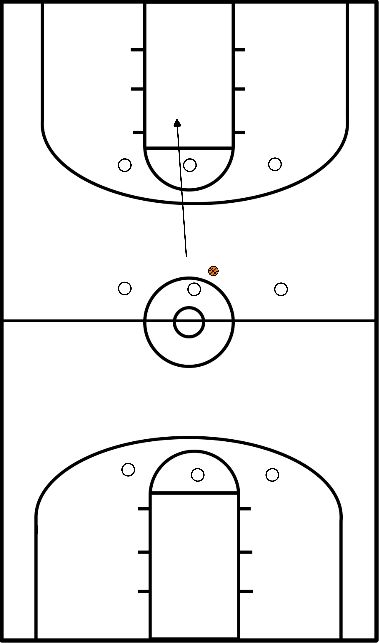
- 2 players on offense.
- 2 players on defense.
- 2 players at the free throw line.
- 2 players at the level of the other free throw line.
- Play 2 against 2 until there is a score or stop.
- Defense gives outlet pass to player at height free throw line.
- These go 2-for-2 to other side of the court.
- Offense becomes defense and returns.
- Defense goes to height free throw line.
Note: ball entered behind baseline, with defense.
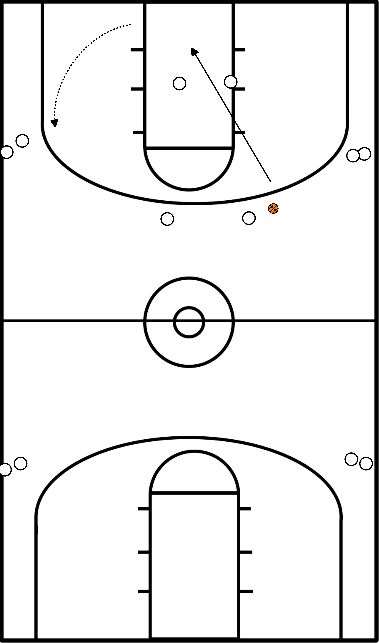
- The idea is for the player with the ball to get past a 100% giving defender in 3 dribbles.
- The scoring player stays put, misses then goes out and the defender may attack against a new person.
- The goal is for the player to give everything during this exercise.
- Here the attacker is forced to be explosive and use his whole body.
